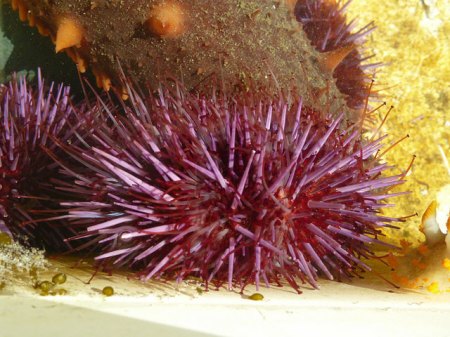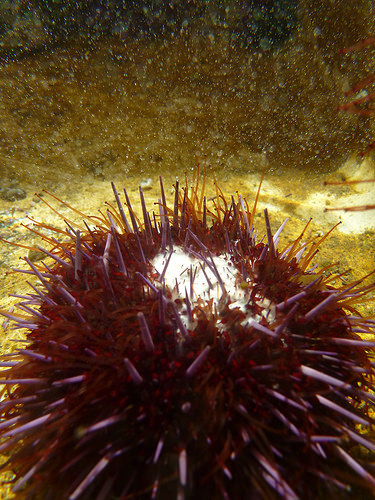 In second year Biology we are currently studying reproduction and although our focus is human reproduction, sea urchins are a wonderful model to study. Pearson College divers collected about 40 purple sea urchins (Strongylocentrotus purpuratus) and brought them back to the floating lab. In Biology class we injected them with potassium chloride which causes them to release their eggs or sperm.
In second year Biology we are currently studying reproduction and although our focus is human reproduction, sea urchins are a wonderful model to study. Pearson College divers collected about 40 purple sea urchins (Strongylocentrotus purpuratus) and brought them back to the floating lab. In Biology class we injected them with potassium chloride which causes them to release their eggs or sperm.
I have done this lab many times and in many locations and I am very pleased to say that this time was my most successful! The first urchin I injected released many healthy eggs. This is where my luck usually changes because without sperm, eggs are useless. I asked students to choose a male urchin (there is no way to tell by looking at them, so it takes some luck). Bader chose one and very soon after being injected streams of sperm came out of the gonopores!!

Students then took a sample of eggs to look at under the microscope then added sperm in order to watch fertilization.
Photo above at 2 hours post-fertilization. All of the eggs are fertilized and a few are at the two-cell stage.
At 5 hours post-fertilization, there are some two-cell stage embryos but most are at the four-cell stage.
At 10 hours, we had blastulae with big cells, still in their fertilization membranes.
At 21 hours, blastulae with smaller cells, still in their fertilization membranes.
At 26 hours, some of the blastulae hatched out of their membranes and started spinning.


 At 6 and 7 days post-fertilization, we had pluteus larvae!
At 6 and 7 days post-fertilization, we had pluteus larvae!
All of the urchin larvae have now been released into Pedder Bay with warm wishes for a long kelp-ful life!
See https://www.flickr.com/photos/130038530@N07/sets/72157651009889142/ for more photos.































